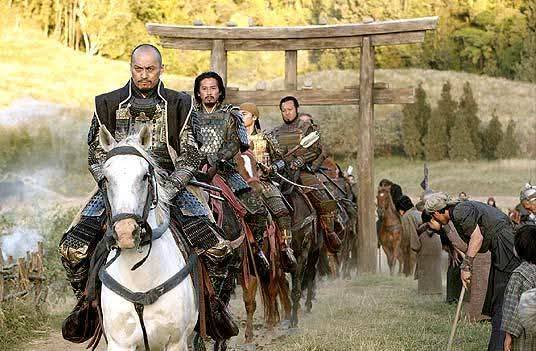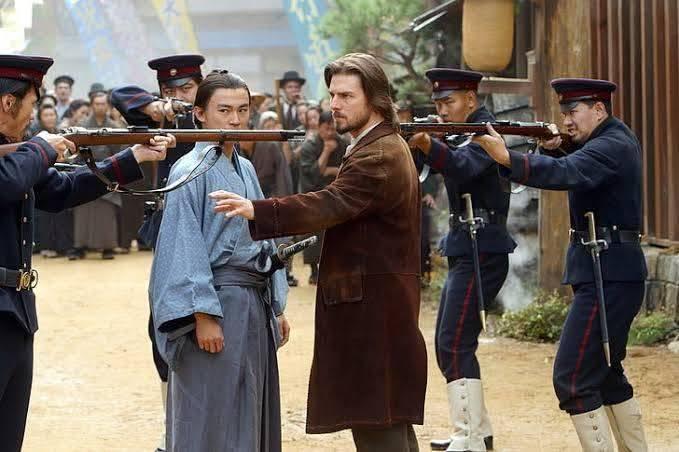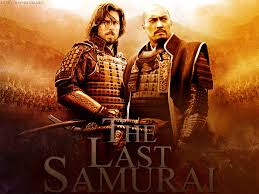The Last Samurai (2003)


“The Last Samurai,” directed by Edward Zwick and released in 2003, is a captivating historical war film that delves deep into the complexities of honor, cultural conflict, and personal transformation. Set against the tumultuous backdrop of Japan’s Meiji Restoration, the film masterfully portrays the clash between traditional samurai values and the relentless march of Western modernization. Starring Tom Cruise as Nathan Algren and Ken Watanabe as Katsumoto, “The Last Samurai” is celebrated for its breathtaking cinematography, rich character development, and profound exploration of identity and change.
Plot Summary
Set in the late 19th century, “The Last Samurai” unfolds during a pivotal era in Japanese history. After centuries of isolation, Emperor Meiji embarks on an ambitious mission to modernize Japan, adopting Western technologies and restructuring the military. This rapid transformation poses a significant threat to the ancient traditions and values that have long defined Japanese culture, particularly the revered way of the samurai.
Nathan Algren (Tom Cruise), a disillusioned American military officer haunted by his experiences in the American Civil War, is recruited to train the imperial army in modern warfare techniques. His mission is clear: suppress the rising samurai rebellion led by the honorable and steadfast Katsumoto (Ken Watanabe). As Algren immerses himself in Japanese society, he becomes increasingly conflicted about his role in the impending conflict.
Captured by Katsumoto’s forces after a fierce battle, Algren is taken to the samurai village where he witnesses firsthand the samurai’s unwavering commitment to their code of honor and way of life. Through his interactions with Katsumoto and the villagers, Algren undergoes a profound personal transformation, gradually embracing the samurai ethos and questioning the morality of his original mission. The film culminates in an epic showdown that symbolizes the struggle between tradition and modernization, leaving a lasting impact on both Algren and the audience.
Themes
- Honor and Duty: Central to the film is the samurai code of Bushido, emphasizing honor, loyalty, and self-discipline. The characters grapple with their responsibilities to their leaders, families, and personal principles.
- Cultural Conflict: The juxtaposition of traditional Japanese values against Western modernization highlights the tensions and misunderstandings that arise during periods of significant societal change.
- Personal Transformation: Nathan Algren’s journey from a disillusioned soldier to a man who finds purpose and redemption reflects the transformative power of cultural immersion and self-discovery.
- Identity and Belonging: The struggle to maintain one’s cultural identity in the face of external pressures for assimilation is poignantly portrayed through the samurai’s resistance to change.
Visuals and Direction
Edward Zwick’s direction brings the rich tapestry of 19th-century Japan to life with stunning cinematography and meticulous attention to detail. The film’s visual narrative is enhanced by sweeping landscapes of the Japanese countryside, the grandeur of traditional samurai armor, and the stark contrast between ancient practices and modern military technology. The grand battle sequences are choreographed with precision, capturing the chaos and brutality of warfare while highlighting the strategic brilliance of both sides.
Zwick employs a balanced storytelling approach, seamlessly blending intense action with intimate character moments. The use of authentic locations, traditional costumes, and period-accurate set designs contributes to the film’s immersive atmosphere, allowing viewers to fully engage with the historical context and emotional depth of the narrative.
Performances

- Tom Cruise as Nathan Algren: Cruise delivers a nuanced performance as a tormented soldier seeking redemption. His portrayal captures Algren’s internal struggle, vulnerability, and eventual embrace of the samurai way, showcasing his range as an actor.
- Ken Watanabe as Katsumoto: Watanabe’s performance is both dignified and compelling, embodying the grace, strength, and wisdom of a true samurai leader. His chemistry with Cruise adds emotional depth to the narrative, highlighting the mutual respect and understanding that develops between their characters.
- Supporting Cast: The film features a strong supporting ensemble, including Tony Goldwyn as Colonel Bagley, Koyuki as Taka (Katsumoto’s adopted daughter), and Billy Connolly as Samovar. Each actor contributes to the rich characterization and cultural authenticity of the story.
Music and Score
James Horner’s evocative score plays a pivotal role in enhancing the film’s emotional resonance and epic scope. The music seamlessly blends traditional Japanese instruments with Western orchestral arrangements, reflecting the film’s central theme of cultural fusion and conflict. The stirring melodies underscore key moments of triumph, loss, and introspection, amplifying the narrative’s emotional impact and grandeur.
Critical Reception
“The Last Samurai” received widespread acclaim for its ambitious storytelling, stunning visuals, and powerful performances. Critics praised Edward Zwick’s direction for its respectful and insightful portrayal of Japanese culture, avoiding common Western stereotypes and offering a more authentic representation. Tom Cruise and Ken Watanabe’s performances were particularly lauded, with Watanabe’s portrayal earning him an Academy Award nomination for Best Supporting Actor.
While some critics pointed out historical inaccuracies and the “white savior” trope embodied by Algren’s character, the film was largely celebrated for its heartfelt narrative and the respectful depiction of the samurai legacy. The balance between action and emotional depth was highlighted as a key strength, making “The Last Samurai” a standout in the genre of historical dramas.

Box Office and Legacy
“The Last Samurai” achieved significant box office success, grossing over $450 million worldwide against a budget of approximately $140 million. Its commercial performance solidified its status as a major Hollywood production, appealing to a broad international audience.
The film’s legacy endures through its influence on subsequent historical and war dramas, setting a benchmark for cultural authenticity and character-driven storytelling. It sparked renewed interest in samurai culture and Japanese history, inspiring audiences to explore the rich traditions and philosophies that underpin the samurai legacy.
Ken Watanabe’s acclaimed performance also paved the way for greater recognition of Japanese actors in Hollywood, fostering cross-cultural collaborations in the film industry.
Conclusion
“The Last Samurai” stands as a remarkable achievement in historical filmmaking, offering a poignant exploration of honor, cultural identity, and personal redemption. Through Edward Zwick’s visionary direction, Tom Cruise’s compelling performance, and Ken Watanabe’s dignified portrayal of Katsumoto, the film delivers a powerful narrative that resonates with audiences worldwide. Its stunning visuals, evocative score, and thoughtful thematic depth contribute to its enduring impact, making “The Last Samurai” a timeless epic that continues to inspire and move viewers long after its release.











